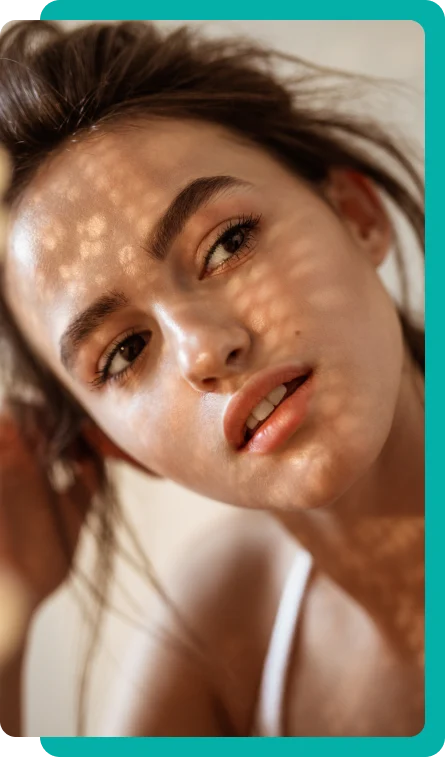For Patients
About
For Providers
Locations
Blog
Contact
Menu
Facing aging causes lots of changes in a person’s appearance – including the formation of wrinkles, the loss of cheek volume, and more. Dermal filler injections are great alternative treatments to plastic surgery for patients who want to restore facial volume, but some of them are afraid of experiencing facial overfilled syndrome if the procedure isn’t done correctly.
So how can people avoid overfilling their cheeks with dermal filler injections? Patients can avoid the dreaded pillow face syndrome by looking for experienced aesthetic practitioners, choosing the right amount and type of filler injections, getting fillers gradually, treating skin laxity, and following aftercare tips.

Injectable fillers are some of the most commonly used products for cosmetic enhancement. According to the 2020 ASPS Plastic Surgery Statistics Report, about 3.4 million soft tissue filler treatments were performed in the country alone – including procedures for addressing volume loss in various treatment areas like the lips, chin, and cheeks.
Overfilling is one of the most dreaded complications of getting injectable fillers. It can cause psychological distress for most patients, while others may even experience limited facial movement. This side effect is typically observed in patients who had cheek fillers, but overfilling may also occur in areas like the forehead, lips, chin, or under the eyes.
Although the appearance of overfilled cheeks is quite obvious in most cases, this complication is also linked to the prevalence of body dysmorphic disorder (BDD). Because BDD patients feel like their faces are disfigured, they tend to think that they have chipmunk cheeks after getting fillers.
Your aesthetic practitioner or facial plastic surgeon may recommend lots of different treatment options for addressing overfilled cheeks, but the best course of action for any aesthetic decision is due diligence. Here are some ways to reduce your risk of getting overfilled cheeks:
Most cases of facial overfilled syndrome are related to poor selection of a cosmetic doctor. Cheek filler treatment is a relatively safe and simple procedure, but it’s still important to find an experienced doctor or practitioner to perform the treatment and minimize any complications. A good cosmetic doctor performs a facial assessment first to determine the right amount of cheek fillers to use and find out which areas should be injected for the best results.
Filler treatment requires precise injection techniques to achieve the subtle results that patients look for. Before proceeding with the procedure, don’t forget to ask the provider about their previous experiences and qualifications. Patients should also ask providers for before-and-after photos of their previous clients so they can get an idea about what results they can help achieve.
Filler materials come in different types, consistencies, and formulations that affect how they look on the patient’s face. Hyaluronic acid fillers are the most common type of filler injections because they’re safe to use and easy to work with. They also only require a few doses to achieve natural-looking results for most patients.
Another common filler material is poly-L-lactic acid, a synthetic but biocompatible filler material that restores facial volume. It also has better filler longevity than hyaluronic acid fillers, but it can’t easily be dissolved by a counteracting antidote.
Incorrect assessment of filler materials and dosage may lead to adverse reactions like pillow face syndrome and others. To choose the right type and amount of filler, make sure to talk to your provider first about the results you want.
Soft tissues require a certain period of time to fully absorb filler particles and produce more collagen, so it might take a while for the final results to show. But some people tend to be impatient about their cheek filler results so they get excessive fillers. The accumulation of filler injections in their cheeks and other injected areas eventually catches up until they notice that they have pillow cheeks.
To avoid this, practitioners always tell patients to wait for ample time until the cheek fillers settle. Most patients start with about 2 to 6 syringes during the initial treatment then they wait for a few weeks until the filler settles. If they want additional volume, then they talk to the provider about getting more cheek fillers and starting a new cycle of filling their cheeks.
Facial volume loss is only one of the many signs of aging – people may also experience increased skin laxity and the onset of bone resorption as they get older. Behavior changes in facial muscles and facial bones may result in the hollowing of different face parts, like the cheeks and under-eyes.
It’s important for patients to address other facial aging issues first so they won’t have to solely rely on cosmetic filler injections to enhance their muscle and bone structures. For example, laser treatment may help tighten the skin so that it can hold the shape of cheek fillers better. But before undergoing any aesthetic treatment, consult with a cosmetic doctor first to find out if you’re qualified for it. They can also tell you how it may affect the cheek fillers.
Getting cheek fillers is a quick treatment that doesn’t require extensive preparation, but aesthetic practitioners still recommend a few aftercare tips to ensure the best results and prevent complications like allergic reactions or filler migration. Some side effects like swelling and bruising are normal for a few days, but make sure to contact healthcare practitioners immediately if they worsen or persist.
Filler migration is one of the most common reasons why pillow cheek syndrome occurs. It’s when the injected filler accidentally transfers to other facial parts because of over-injection or pressure on the injected site.
To avoid filler migration and chipmunk cheeks, make sure to follow all aftercare instructions by the provider – which may include avoiding alcoholic drinks and hot temperatures, using ice packs to relieve pain and swelling, or massaging the treated area in the right way.
Although getting cheek fillers from experienced cosmetic practitioners is one of the best ways to avoid a puffy appearance after the treatment, some patients may still have their cheek fillers look overdone because of other factors.
The good news is that there are still a few ways to correct facial overfilled syndrome, such as:
Filling the face with more dermal fillers might sound like a counterproductive approach, but it’s actually an effective option in most cases. Remember that symmetry and proportion play a big role in a person’s facial structure – one area might look too plump because it’s right next to a sunken area.
Treating an area that looks overfilled requires supplementing the surrounding areas with the right amount of soft tissue fillers to balance the facial structure. For example, a patient who had tear trough fillers might look like they have flat cheeks. Instead of simply dissolving the injected cosmetic fillers using a counteracting antidote, it’s better to re-volumize the cheeks to achieve better symmetry.
The same is also true for overfilled cheeks – their plumpness can be balanced if the right amount of fillers are administered in the tear-trough area. However, remember that this might not be the best solution for everyone. If the cheeks are overfilled and the under-eye area looks puffy at the same time, then partially dissolving the cheek filler might do the trick.
Like hyaluronic acid, hyaluronidase is also a naturally occurring enzyme in the body. The synthetic form of this enzyme is often used as an effect-reversing antidote for botched hyaluronic filler injection treatments.
In some cases, the best way to fix overfilled cheeks is to dissolve the filler injection and start over. But some patients are still hesitant to dissolve their fillers because they’re afraid of undergoing the treatment again only to end up with the same results. In those situations, aesthetic practitioners may encourage them to wait until the cheek fillers naturally degrade before adding some more to the layers of tissue.
It’s crucial to remember that hyaluronidase treatments aren’t the same for everyone – some patients can notice results in less than an hour while others might require multiple sessions to dissolve their cheek fillers. Hyaluronidase also only works for fillers made with hyaluronic acid – patients who had other types of fillers might need to consult a cosmetic doctor for other solutions to their overfilled cheeks.
Lastly, hyaluronidase dissolves all kinds of hyaluronic acid – not just the synthetic ones found in cosmetic fillers. This means some patients might notice even less volume than before until their body fully adjusts.

Cheek fillers are great for restoring cheek volume, allowing patients to maintain their youthful appearance without the need for plastic surgery. If you’re worried about facial overfilled syndrome affecting the subtle and natural appearance of the cheek fillers, then make sure to find an experienced doctor to perform the treatment for you.
Dr. Lanna Aesthetics is a trusted skincare and beauty partner for many men and women in New York City. With cheek fillers and other aesthetic treatments, we can help you feel more beautiful and confident in your own appearance.

Join Dr. Lanna & Dr. Doshi for a Transformation
Unlock the possibilities with our certified facial and oculofacial plastic surgeries. Attend our free webinar to find out how we can tailor solutions for you, with financing available to fit your budget.
